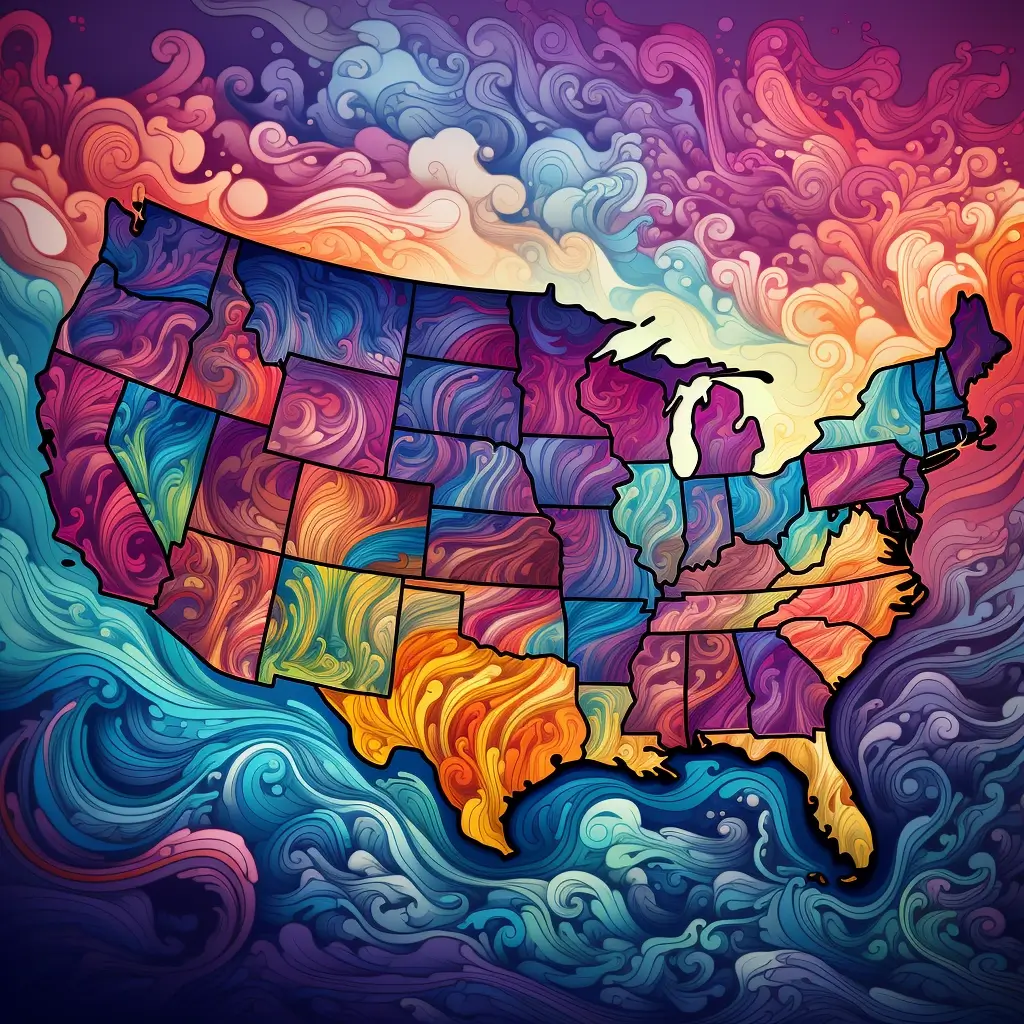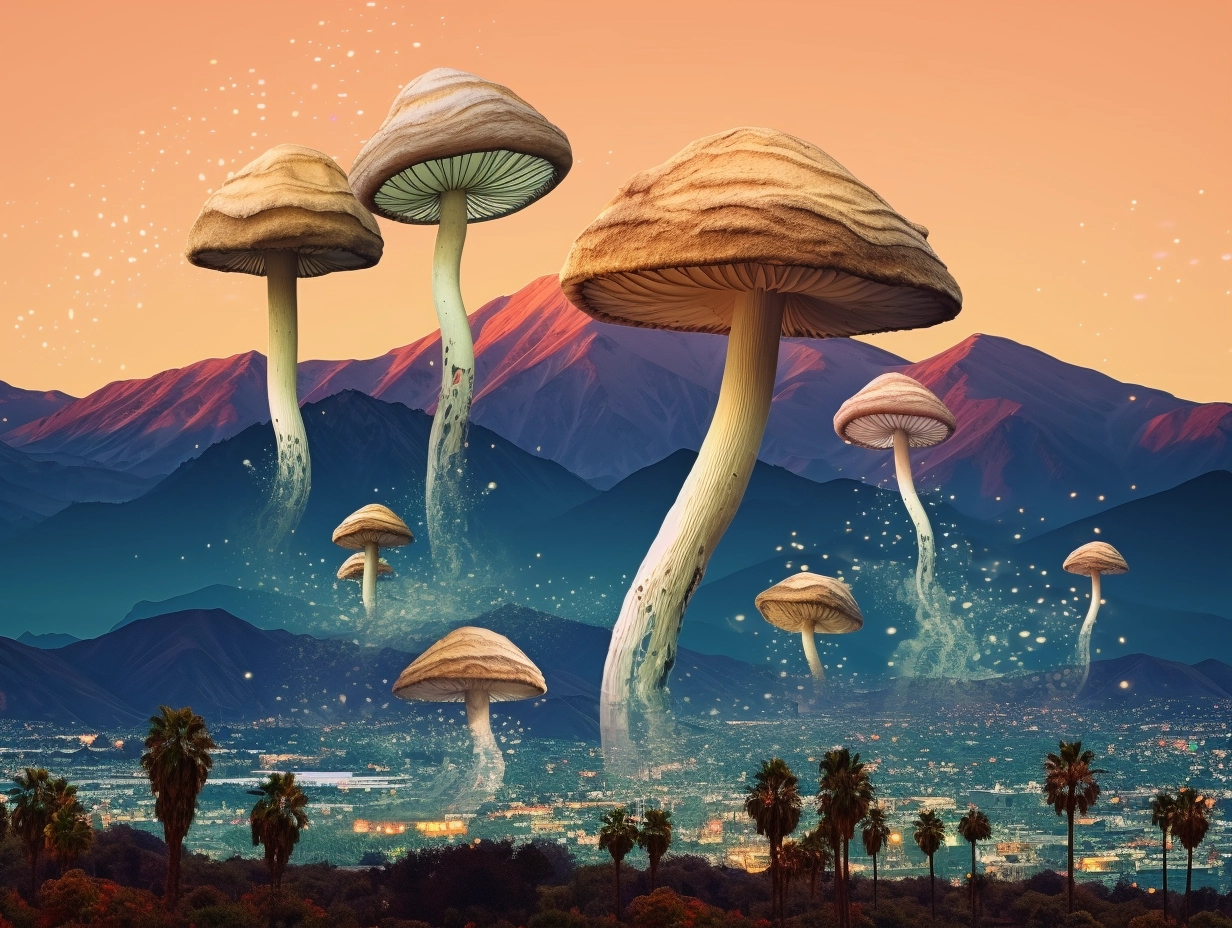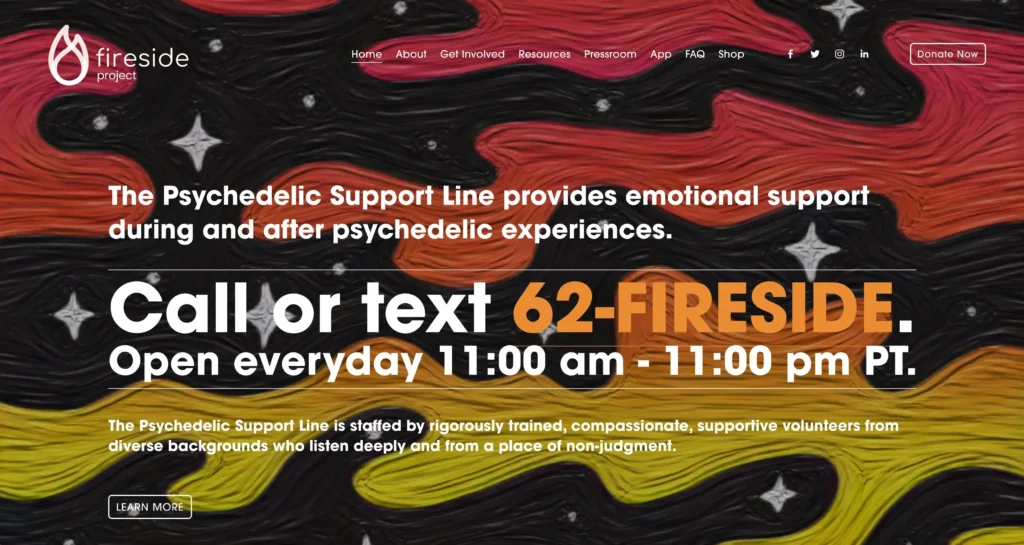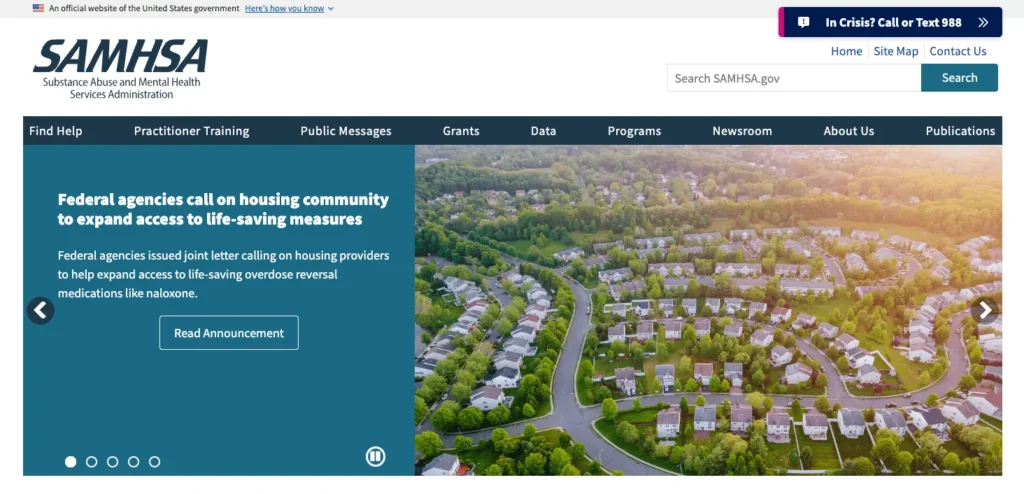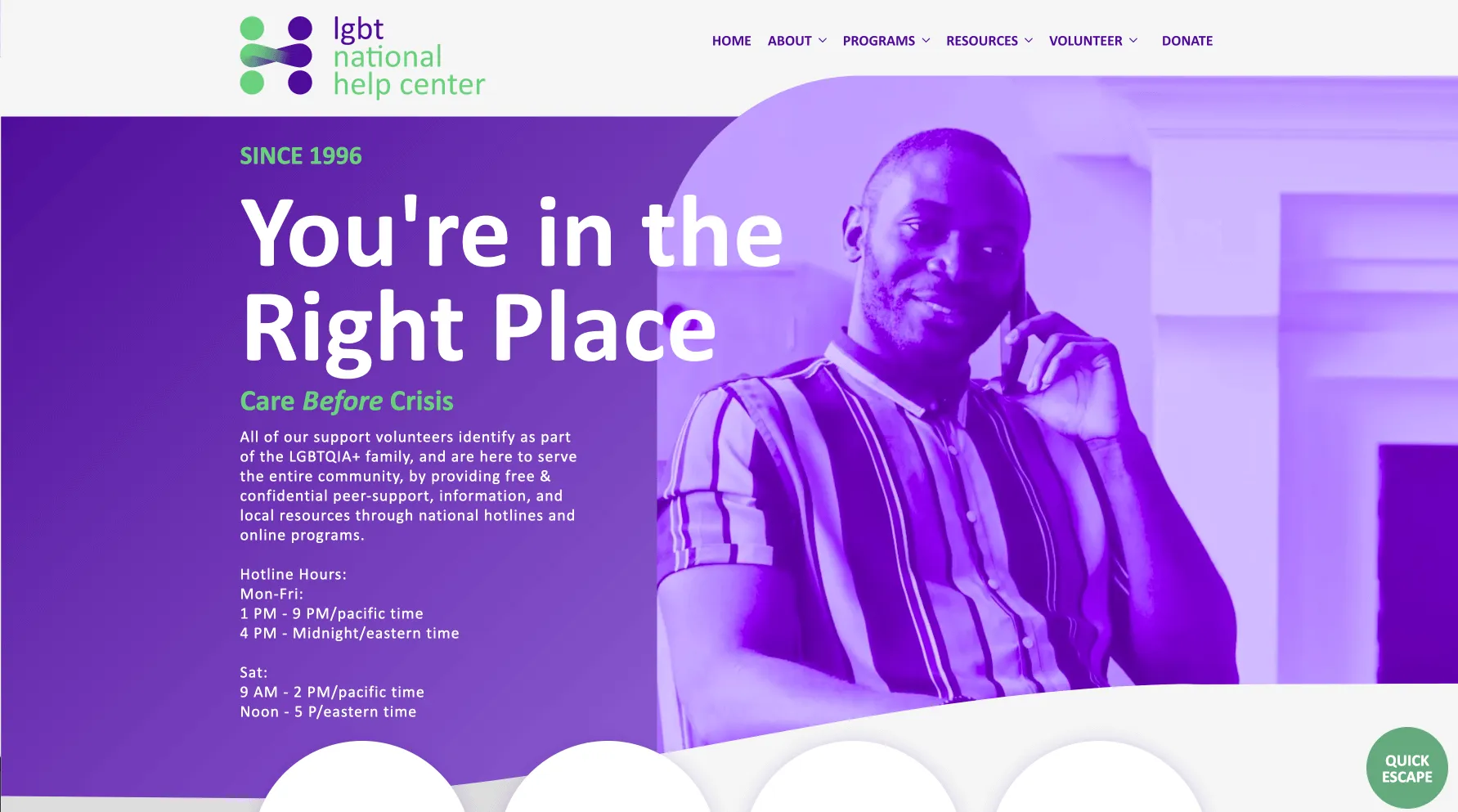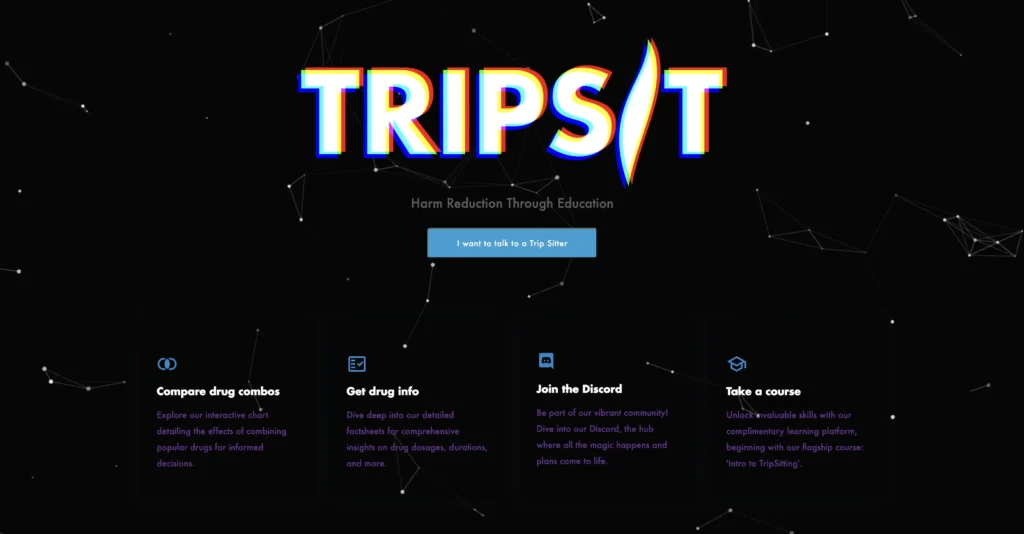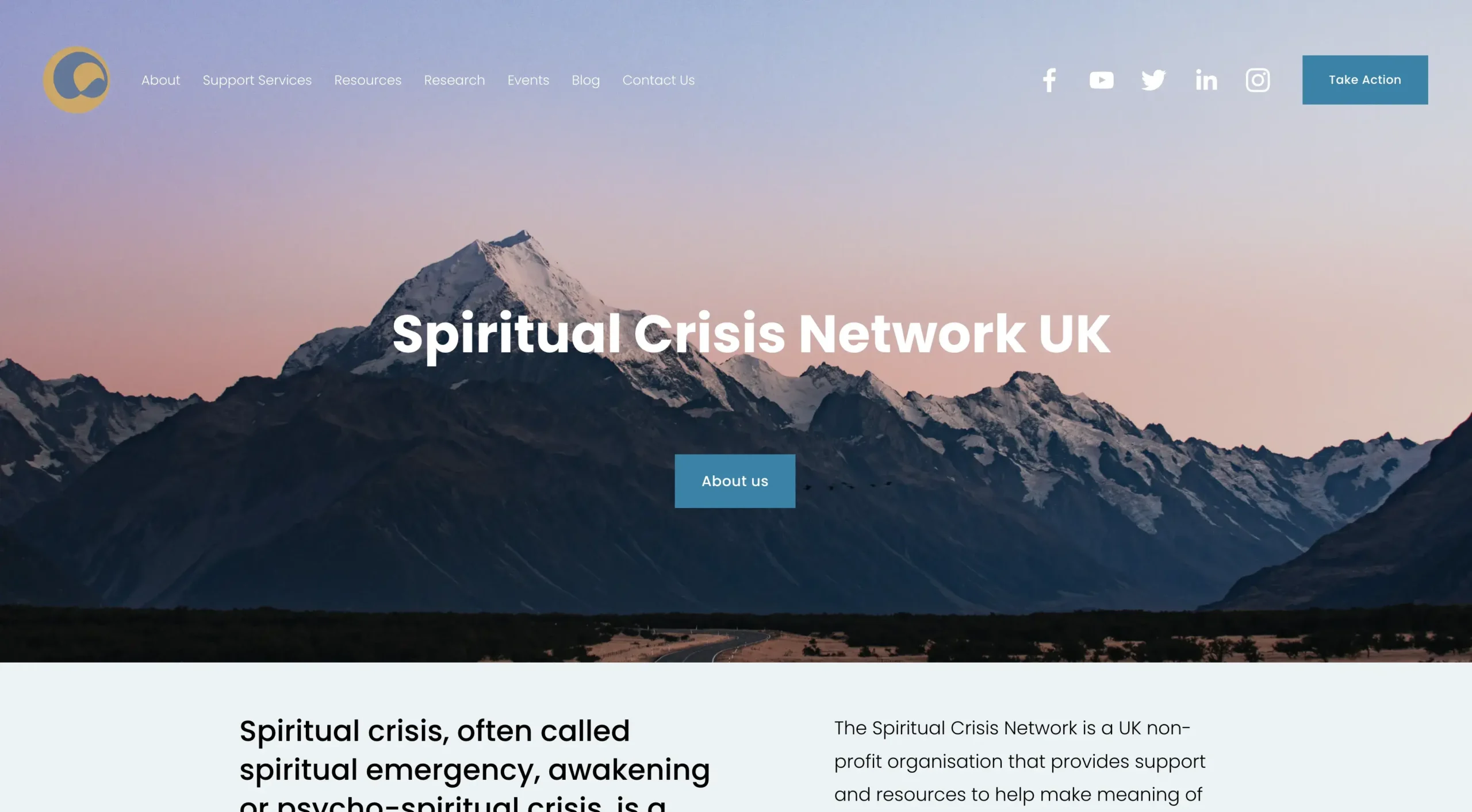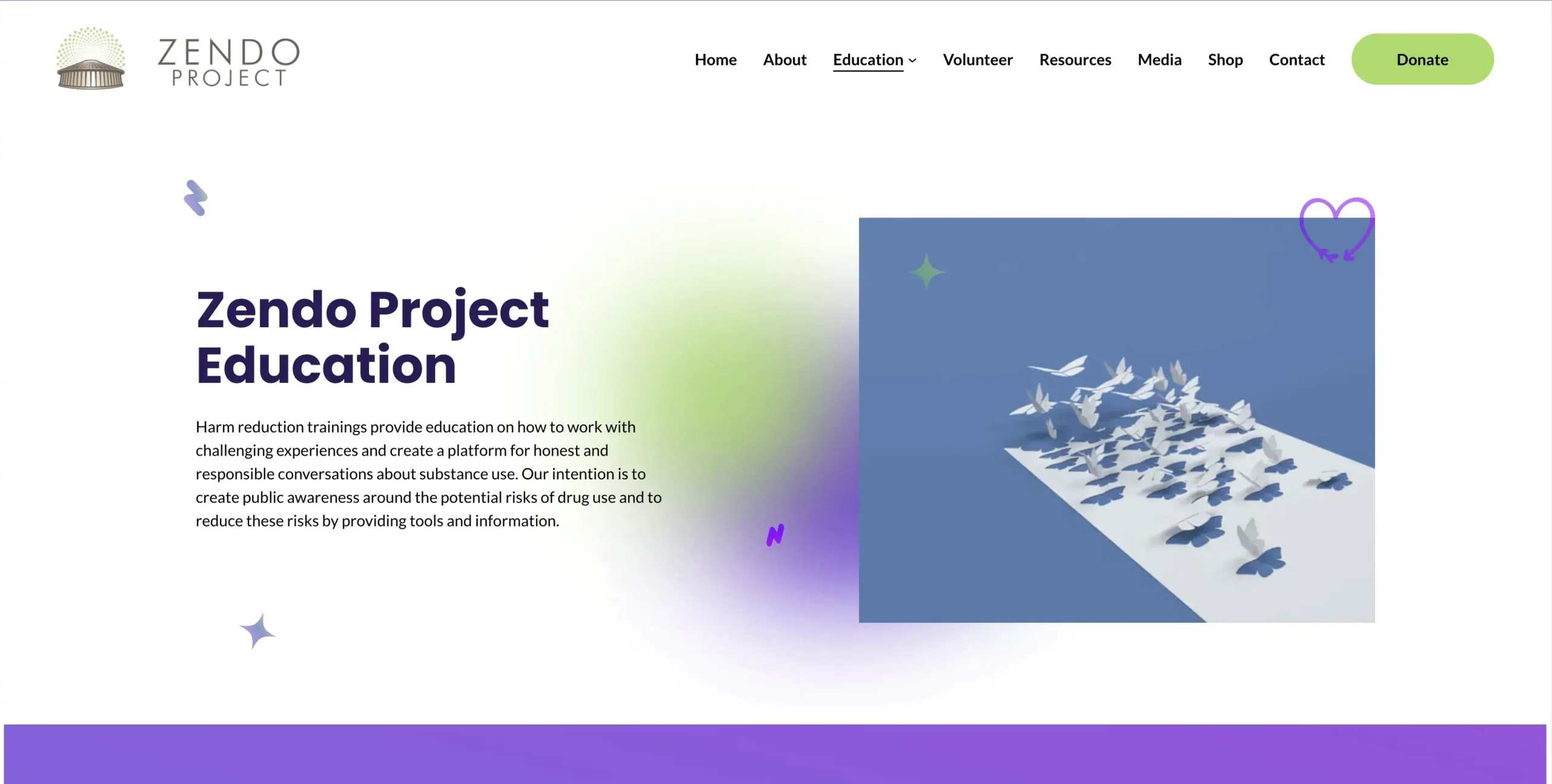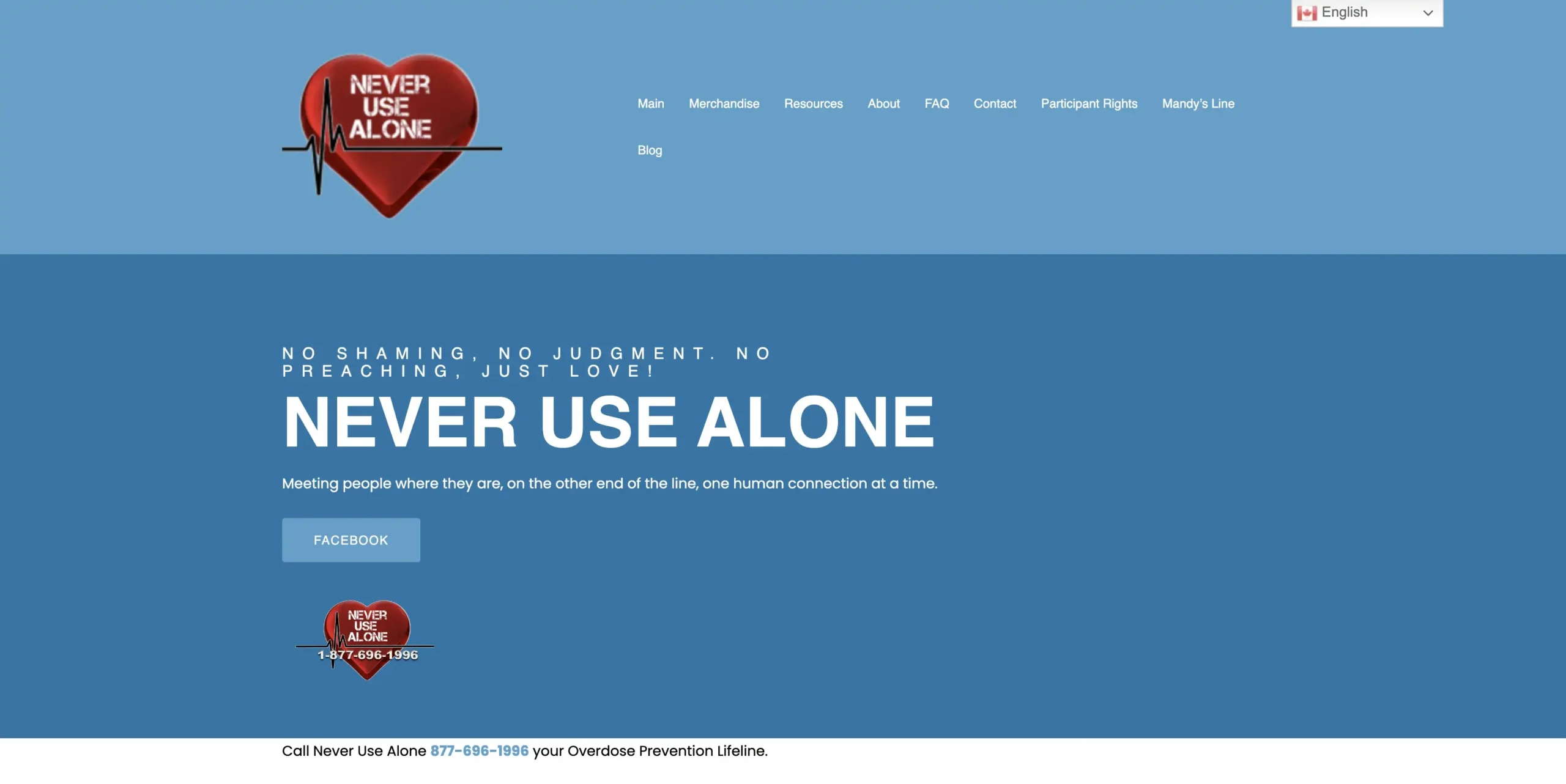A Student’s Guide to Psychedelic Harm Reduction and Navigating Challenging Experiences
A Student’s Guide to Psychedelic Harm Reduction and Navigating Challenging Experiences
DISCLAIMER: The purpose of this resource is to reduce harm. It is not to encourage the use of or to endorse psychedelics. Recreational use of psychedelics (outside of a clinical setting) may result in harmful outcomes. This information is not intended to be a substitute for professional medical advice, diagnosis, or treatment. It should not be used in place of the advice of your physician or other qualified healthcare provider. Individuals with certain preexisting mental and physical health conditions should not use psychedelics. Always consult with a trained medical professional about your specific healthcare needs.
Having a Medical Emergency? If you or a loved one are experiencing a medical emergency and require immediate attention, please dial 911 (USA) immediately. For a list of international emergency numbers, please click here.
Having a Challenging Trip? Fireside Project’s Psychedelic Support Line provides emotional support during and after psychedelic experiences. Their trained volunteers are on hand to help whether you’re having a positive experience or undergoing an adverse psychedelic experience. Call or text 62-FIRESIDE. Open every day from 11:00 am to 11:00 pm PT.
As interest in psychedelics undergoes a cultural revival, accompanied by a rise in clinical research and development and potential FDA approval of certain psychedelic compounds, college students may be coming across media that seems to promote the use of these substances. In some instances, media coverage of psychedelics portrays them as a panacea or cure-all, often glossing over real concerns regarding safety and tolerability. It’s also likely that they have seen consumer-ready psychedelic products. The purpose of this student’s guide to psychedelic harm reduction is to educate students about the potential risks and critical factors associated with psychedelic use to minimize or avoid harm and more safely navigate challenging experiences. We have gathered a range of resources that offer contact with trained support-line staff who are skilled in handling crises related to psychedelics and providing help with integrating these experiences.
When talking about psychedelics, it’s paramount to prioritize safety and preparedness, especially considering these substances’ profound and often unpredictable nature. Harm reduction begins with thorough education: understanding the contraindications, effects, risks, appropriate dosing, and legal aspects of various psychedelics is crucial.
What are psychedelics?

Psychedelics, also known as hallucinogens, are a class of psychoactive substances that produce profound alterations in perception, mood, and cognitive processes. Anecdotally, these substances can induce experiences often described as transcendent, including sensations of unity, altered time perception, and vivid visual hallucinations. However, some users also report having serious, adverse reactions to psychedelics. Most often, these are what is known as a “bad trip”: an event where someone has a negative experience that may cause serious psychological distress. Common types of classical psychedelics include lysergic acid diethylamide (LSD), psilocybin (found in magic mushrooms), dimethyltryptamine (DMT), and mescaline (derived from the peyote and San Pedro cacti). Other non-classical psychedelics include ketamine and 3,4-Methylenedioxymethamphetamine (MDMA).(1)
How Do Psychedelics Work?
The primary mechanism through which classical psychedelics exert their effects is by interacting with serotonin receptors in the brain. Other drugs, such as ketamine and MDMA, affect different receptor pathways. This interaction changes chemical messaging in the brain, leading to the altered states of consciousness characteristic of psychedelic experiences. This mechanism is responsible for changes in perception and emotion brought on by psilocybin and other classical psychedelics.(1)
Therapeutic Potential of Psychedelics
Recent research has renewed interest in the potential therapeutic uses of psychedelics. Studies have shown promising results in treating various mental health disorders, including depression, post-traumatic stress disorder (PTSD), and anxiety, including anxiety in terminally ill patients. Some research has suggested that psilocybin, for instance, may produce significant and lasting reductions in depression and anxiety in clinical trials. These findings have led to a reevaluation of the therapeutic potential of these substances. However, their use remains controversial and heavily regulated due to their potent effects and potential for adverse psychological events (aka a bad trip).(3)

Typical Trip Timelines & Subjective Experience Trajectory for Classical Psychedelics, Ketamine, and MDMA
Each psychedelic compound has a distinct pharmacological profile, leading to unique experiences. Classical psychedelics like LSD, psilocybin, and DMT are known for their strong hallucinogenic properties. MDMA, though often grouped with psychedelics, primarily enhances mood, empathy, and social connection. Ketamine, a powerful dissociative anesthetic (a type of drug that makes you feel detached from yourself and your surroundings), also has hallucinogenic properties in high doses.(4, 5, 6)
LSD (Lysergic Acid Diethylamide)(7)
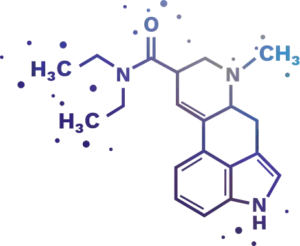
Psilocybin (Magic Mushrooms)(9)
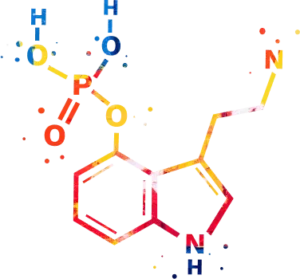
DMT (Dimethyltryptamine)(10)

Ketamine(11)
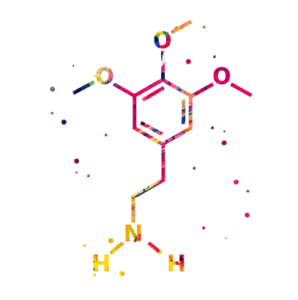
MDMA (3,4-Methylenedioxymethamphetamine)(12)

Each substance has a unique profile affecting perception, emotion, and cognition. The subjective experiences are deeply personal and can vary widely among individuals. Additionally, factors like the environment (setting) and the individual’s mental state (set) play crucial roles in shaping the psychedelic experience.
Contraindications for Classical Psychedelics, Ketamine, and MDMA
Classic psychedelics, ketamine, and MDMA, while having potential therapeutic benefits, also come with significant contraindications. Understanding the risks of psychedelic use is crucial for safety, especially considering the powerful psychological and physiological effects these drugs can induce.(12)
Classic Psychedelics (LSD, Psilocybin, DMT) Contraindications(13)
Mental Health Conditions:
Individuals with a personal or family history of psychotic disorders (such as schizophrenia) or bipolar disorder are at increased risk of adverse psychiatric reactions.
Cardiovascular Issues:
Some psychedelics can elevate blood pressure and heart rate, posing risks to those with underlying heart conditions.
Medications Interactions:
Psychedelics can negatively interact with a range of medications, especially antidepressants like SSRIs, leading to potential serotonin syndrome or diminished effects of the psychedelic.
Pregnancy and Lactating Mothers:
The effects of psychedelics on fetal development are not well-studied; thus, they are contraindicated during pregnancy.
Mental State and Environment:
Physical location and an individual’s mental state (set and setting) play a critical role in the psychedelic experience. Inappropriate settings or challenged mental states can lead to negative experiences.
Ketamine Contraindications(6)
Neurological Health:
Individuals with a history of severe neurological disorders, including epilepsy, should not use ketamine due to its potential to cause neurological side effects such as seizures in susceptible individuals.
Cardiovascular Risks:
Ketamine can increase heart rate and blood pressure, posing risks to those with pre-existing cardiovascular conditions such as heart disease or hypertension.
Mental Health Conditions:
While there is interest in using ketamine for treating certain psychiatric disorders, it can worsen symptoms in some conditions, especially in individuals with a history of psychosis or severe dissociative disorders.
Medication Interactions:
Ketamine can interact with various medications, including CNS depressants, anesthetics, and certain psychiatric medications. These interactions can lead to increased sedation or other adverse effects.
Bladder and Urinary Tract:
Chronic use of ketamine can lead to urinary tract and bladder issues, including ketamine cystitis, making ketamine contraindicated for individuals with a history of urinary tract or bladder problems.
Pregnancy and Breastfeeding:
Ketamine is also contraindicated during pregnancy and breastfeeding due to potential risks to the fetus or infant, including developmental issues and other complications.
Substance Abuse and Dependence:
Given its potential for abuse and the development of psychological dependence, ketamine should be used cautiously in individuals with a history of substance abuse or addiction.
MDMA Contraindications(14)
Neurological Health:
MDMA is contraindicated for individuals with a history of seizures or other neurological disorders.
Cardiovascular Risks:
Similar to psychedelics, MDMA can increase heart rate and blood pressure, posing risks to those with heart conditions.
Mental Health Conditions:
While MDMA is being studied for treating certain mental health conditions, it can exacerbate symptoms in some disorders, such as anxiety or mood disorders, particularly in uncontrolled settings.
Medication Interactions:
MDMA’s interaction with antidepressants, especially SSRIs and MAOIs, can be dangerous, leading to serotonin syndrome.
Hydration and Overheating:
MDMA can disrupt the body’s temperature regulation and lead to dehydration. It’s crucial to manage hydration and avoid excessive water intake, which can lead to hyponatremia (low blood sodium, aka water poisoning).
Pregnancy and Breastfeeding:
Due to potential risks to the fetus or infant, MDMA is contraindicated during pregnancy and breastfeeding.
It’s important to note that while research into psychedelics and MDMA is growing, there is still much to learn about their long-term effects and interactions. Individuals considering these substances, especially for therapeutic purposes, should consult healthcare professionals and consider existing mental and physical health conditions. The legal status of these substances also varies by region, and they are often subject to strict regulatory controls.(12, 6, 13)
Understanding Psychedelic-Assisted Therapy vs. Recreational Use
Psychedelic-assisted therapy and the recreational use of psychedelics are two fundamentally different approaches to how someone may use these substances, each with its own context, intentions, and implications.(14, 15)
In psychedelic-assisted therapy, the use of substances like psilocybin or MDMA is integrated into a therapeutic process under the guidance of trained professionals. This therapy typically occurs in a controlled, clinical setting designed to provide safety and support. The focus is on mental health treatment, and psychedelics serve as a tool to enhance or facilitate the therapeutic process. Therapists are present throughout the session, providing guidance and support. The dosage is carefully controlled, and the entire process is often part of a larger treatment plan that includes preparatory sessions and post-session integration therapy (the practice of utilizing talk therapy and other techniques to intentionally integrate the psychedelic experience into your daily life and routine).(14, 15)
Furthermore, psychedelic-assisted therapy, within a harm reduction framework, has the potential to be pivotal for individuals transitioning from hard drug and alcohol use. This approach prioritizes informed decision-making, focusing on educating patients about the risks and benefits of psychedelics, without advocating for or against their use. It emphasizes the importance of understanding interactions between psychedelics and other medications, under the guidance of medical professionals. Additionally, this method acknowledges the potential positive impacts of psychedelics, framing their use within a growth-oriented lifestyle. Through this balanced focus on safety and beneficial outcomes, psychedelic-assisted therapy offers a nuanced and potentially transformative option for substance use treatment.(16)
Conversely, recreational use of psychedelics occurs outside of a clinical or therapeutic setting. This type of use lacks a structured environment and professional oversight in therapeutic settings. Recreational use can vary widely in terms of setting, dosage, and the purity of the substances used, leading to unpredictable and potentially risky experiences. The absence of professional guidance and a supportive setting can increase the risk of negative reactions, such as anxiety, panic attacks, or even long-term psychological issues.
Some of the key distinctions are as follows:(14, 15, 16)
Psychedelic Use in a Therapeutic Setting:
Psychedelic Use in a Recreational Setting:
One of the most important and potentially impactful aspects of psychedelic use is integration. Integration is the practice of taking lessons and experiences learned during a psychedelic trip, and integrating them into your daily life. When taken outside of a therapeutic setting, you may not have the necessary support and experience needed to fully integrate the things you learned while under the effects of classic psychedelics or other compounds like MDMA, and ketamine. This can make the recovery process much longer, and you may lose some of the most critical aspects of the psychedelic experience.
Understanding these differences is crucial for anyone considering the use of psychedelics, whether for therapeutic purposes or recreational exploration. The therapeutic use of psychedelics is a growing field of research, showing promise for treating various mental health conditions, while recreational use remains a complex and often legally ambiguous activity.(14, 15, 16)
What is Set and Setting
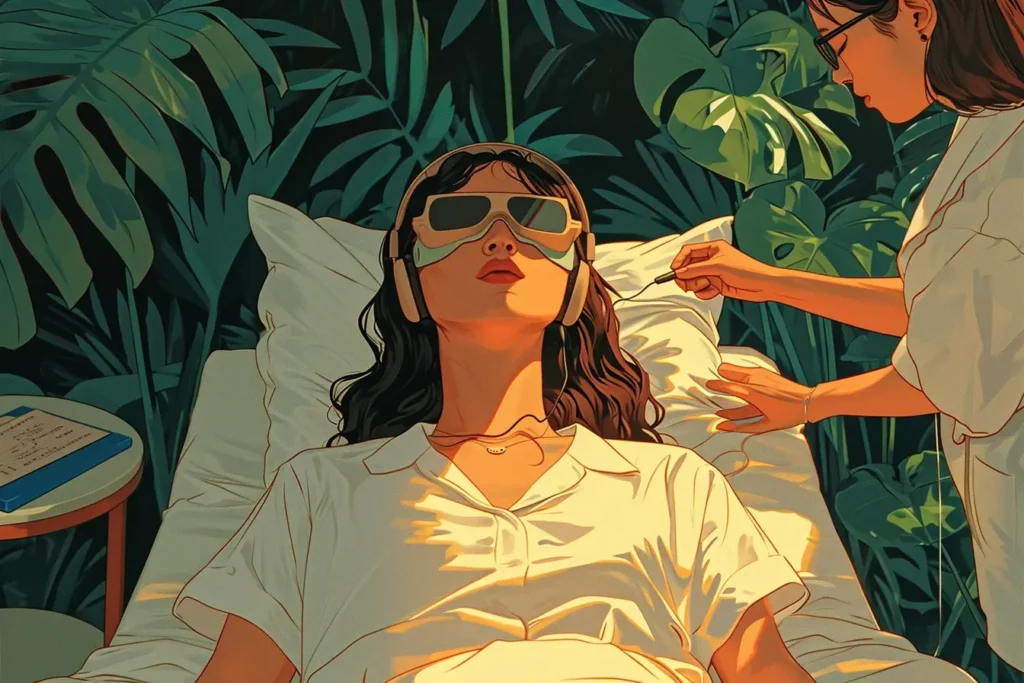
The concepts of “set” and “setting” are fundamental in understanding the experiences and effects of psychedelic substances. These terms were popularized in the field of psychedelic research to emphasize the importance of psychological and environmental factors in shaping the experience of a psychedelic journey.(16, 17, 18)
Set: This refers to the mindset or psychological state of an individual before consuming a psychedelic substance. “Set” encompasses a person’s expectations, mood, and mental health during the experience. This can include their intentions, emotional state, and pre-existing mental conditions. The “set” plays a crucial role in influencing the nature of the psychedelic experience. A positive mindset can lead to profound, insightful experiences, while a negative or anxious mindset may increase the likelihood of a challenging or unpleasant trip.
Setting: This denotes the physical and social environment in which the psychedelic experience occurs. “Setting” includes factors like the location, the presence or absence of other people, the level of comfort and safety, and the general ambiance (including lighting, music, and overall atmosphere). A supportive and secure setting can foster a positive experience, whereas an uncomfortable or over-stimulating environment may lead to disorientation or distress during the psychedelic journey.
The interaction of “set” and “setting” is crucial for the outcome of a psychedelic experience.
Some key considerations include:
Personal Preparation (Set)
Environmental Factors (Setting)
Influence on Experience
Carefully considering both set and setting is recommended for anyone engaging with psychedelics. These elements are key to maximizing the potential benefits and minimizing the risks associated with psychedelic experiences.(16, 17, 18)
Avoid Underestimating the Impact of Set & Setting
The importance of “set” and “setting” in the realm of psychedelic experiences is deeply rooted in how these factors fundamentally influence the nature and quality of the experience.
In essence, set and setting are critical because they can significantly influence not only the immediate experience of the psychedelic journey but also its long-term psychological impact. Good management of set and setting can help in harnessing the therapeutic potential of psychedelics, aiding in personal growth and healing. Conversely, neglecting these aspects can lead to negative experiences, which might include psychological distress or exacerbation of pre-existing mental health issues. (19)
12 Tips for Navigating a Challenging Psychedelic Experience
01
Seek support. The Crisis Text Line provides 24/7 support for virtually any crisis. A skilled Crisis Counselor will receive your message and engage with you through their secure online platform. This trained volunteer will assist you in transitioning from a moment of intense distress to a calmer state. Choose to chat through text message, their online chat app, or WhatsApp.
02
Find a safe support person who can physically be with you or talk to you on the phone. This person should be someone who can be with you and listen empathetically to you, not try to talk you out of your experience. If you cannot identify someone, call or text the Fireside Project (62-FIRESIDE) to speak with a psychedelic support person.
03
Find a stuffed animal, large pillow, thick blanket, or similar soft and bulky item and hug/cuddle it to your chest. Crawl under a blanket and create a physical container for yourself.
04
Find a way to move your body safely in a way that feels good. Dancing, rocking, walking, stretching, etc., are just a few examples.
05
Remember that the experience will eventually end; the only way out is through. Write down what you took and when you took it to keep track of the passage of time. Use your breath to ground yourself, breathing in through your nose and out through your mouth. Breathe in for a count of four and out for six. Try your best to breathe with your diaphragm, feeling your belly doing the rising and falling instead of your upper chest. It can help to lay on your back and put a hand over your heart and your belly button. Make the hand over your belly button do most of the moving when breathing. If you find this helpful, you can try a guided meditation like Yoga Nidra or NSDR (there are many free such meditations on YouTube, Spotify, and other streaming apps).
06
Use your senses as a doorway to the present moment. Listen to the sounds around you and see if you can hear them without naming them. Listen to the texture, timbre, tone, and pitch of the sound; see if you can notice how far away it is. Inhale slowly through your nose and explore the smells you notice, again without trying to name them. Look around you and take in forms, shapes, textures, shadows, lines, and colors. Spend time noticing and exploring what your senses are experiencing in the moment.
07
Shift your environment a bit. If you are indoors, experience what it feels like sitting or standing outside for a little while (if this is safe). If you are outside and have the ability to get indoors (including inside a tent or sleeping bag), see how that feels for a bit. If you are with a group and the group environment itself is a challenge, try pairing off with someone and go somewhere nearby that is safe, quieter, and has low visual stimulation (e.g., no harsh lights, lasers, people moving a lot, etc.).
08
Be sure to take small sips of hydrating fluids throughout your entire experience. Sometimes, a simple glass of water can make a world of difference. Have a light snack of fruit, vegetables, nuts, or crackers. Start with a few bites to ensure your stomach can adapt. Be sure to eat slowly and not overdo it. If you feel nauseous, ginger chews or peppermint tea can help.
09
If you have access to hot water, take a warm shower. Avoid deep baths and hot tubs due to the risk of drowning, and avoid saunas due to the risk of hyperthermia.
10
Put on some background music that aligns with your current experience, which can help things continue moving. It’s not necessarily advisable to try to bypass your experience with music (i.e., putting on happy music if you are experiencing grief). Still, neutral music or music that fits your emotional experience can help broaden what you are experiencing and how.
11
Engage in creative processes to work with the difficult feelings and emotions that you’re experiencing. Color in a coloring book; if you have magazines that are okay to cut up, you can cut out pictures and make a collage; draw whatever emotions or feelings you’re having (it doesn’t need to be a coherent picture, it can be just forms, shapes, squiggles, and colors); journal about your experience (you don’t have to log or analyze your experience- just free-write whatever comes up for you at the moment); play around with a musical instrument.
12
Before taking the psychedelic, list movies, TV shows, books, poems, pieces of art, and musical artists/albums that have historically brought you comfort. These can serve as your “emergency life preservers” should your experience feel too difficult and uncomfortable. It’s generally advised to lean into and be with the difficult feelings and emotions that arise on psychedelics, as there are likely important things to process there. However, if things start to feel unmanageable or overwhelming, it is okay to turn to this list to distract and comfort.
Legalities
Under federal law, most psychedelics, including LSD, psilocybin, and MDMA, are classified as Schedule I substances under the Controlled Substances Act. This classification indicates that they are considered to have a high potential for abuse, no currently accepted medical use, and a lack of accepted safety for use under medical supervision.(20)
Some States and Municipalities with Decriminalization or Legalization Efforts
In recent years a significant shift in public perception of psychedelics, and the underlying science has spurred several states and municipalities to enact significant legal changes regarding civil and criminal penalties for Psychedelic fungi and entheogenic plant medicines. For instance, the city of Oakland has decriminalized the use of some naturally occurring psychedelics such as psilocybin, while others, such as the state of Oregon have legalized the supervised use of magic mushrooms for adults. Often the difference between legalization and decriminalization is not well explained. Legalization means that a substance is fully legal to possess and use with no, or few, criminal consequences (excluding illegal activities such as driving under the influence). Decriminalization on the other hand simply means that something has been moved to the lowest enforcement priority for law enforcement, but it may still carry some civil or criminal penalties for simple use and possession.
Legalized psilocybin for therapeutic use; decriminalized small possession of all drugs.
These legal changes, particularly in states like Oregon and Colorado, both of which recently legalized entheogenic plants and fungi, indicate a growing acceptance of the potential therapeutic benefits of psychedelics and a shift towards a health-focused approach to drug policy. However, it’s important to note that these changes often only pertain to state laws, and federal law still prohibits the use, possession, and distribution of these substances. This discrepancy can create legal ambiguities and complexities.(20)
The trend towards decriminalization and legalization, especially for therapeutic uses, is likely to continue as more research emerges supporting the medical benefits of psychedelics. However, anyone considering the use of psychedelics should remain aware of the specific laws in their jurisdiction, as these can vary significantly from place to place.
Psychedelic Edibles & Consumer-Oriented Products
Psychedelic edibles and consumer-oriented psychedelic products, while gaining popularity, come with significant safety concerns:(21)
Inconsistent Doses and Potency:
Varying concentrations in edibles can lead to unpredictable experiences.
Lack of Accurate Testing:
Psychedelic edibles and other consumer-oriented psychedelic products may not be tested accurately, particularly at the milligrams and micrograms levels.
Inaccurate Ingredients List:
Frequently gray and black market consumer products purposely use inaccurate ingredient lists in order to avoid being detected as containing illegal ingredients. This ultimately means they may contain synthetics, other psychoactive ingredients, or entirely different ingredients than what is expected.
Delayed Onset and Prolonged Duration:
Effects from edibles may take longer to manifest and can last longer, increasing the risk of overconsumption.
Risk of Accidental Ingestion:
These products resemble ordinary food items like snacks, candies, or sweets and can be accidentally ingested, especially by children.
Quality and Contamination Concerns:
Unregulated production raises issues of purity and safety.
Psychological Risks:
Inexperienced users may face intense psychological challenges without proper guidance or understanding.
Lack of Standardization:
Absence of quality control in the market.
Psychedelic edibles introduce an array of safety issues primarily due to their mode of consumption and the unregulated nature of their production. The variability in dosage and potency is a primary concern, as it can lead to either underwhelming or overwhelmingly intense experiences, the latter potentially posing significant risks, especially to inexperienced users. The delayed onset of effects characteristic of edibles often leads to overconsumption, as individuals might ingest more, thinking the initial dose was insufficient, only to find themselves overwhelmed when the effects finally manifest.(16, 20)
When addressing the safety issues associated with psychedelic edibles, a harm reduction approach emphasizes informed decision-making and education about consumption. This includes understanding the variability in dosage and potency, which is particularly relevant due to the unregulated nature of these products. Consumers need to be made aware of the delayed onset of effects characteristic of edibles to prevent overconsumption. Ensuring quality and purity, alongside legal compliance, is also vital. Support and integration post-consumption are also crucial, much like in therapeutic settings, to help individuals process their experiences effectively and safely.(16)
Additionally, the similarity of these products to regular food items raises the risk of accidental ingestion, a particularly concerning issue in households with children. The unregulated market in which many of these products are produced further exacerbates safety concerns, with issues surrounding contamination and lack of quality control. These situations may be compounded by the psychological risks associated with consuming potent psychedelics without adequate preparation, guidance, or understanding of their effects. These factors underscore the need for caution and awareness regarding the use of psychedelic edibles and consumer-oriented psychedelic products.(20, 21)
Microdosing Safety & Harm Reduction Tips
Microdosing, the practice of taking very small amounts of psychedelics like LSD or psilocybin, has gained popularity for its potential benefits, such as enhanced creativity, improved mood, and increased focus without the prolonged intoxicating effects of a full dose. However, safety and harm reduction are crucial considerations. It is also important to note that the science is mixed at best, with some studies indicating that microdosing may not be effective, and others suggesting it may have some legitimate benefits. Furthermore, outside of states like Colorado and Oregon or certain municipalities, microdosing with psychedelics is illegal.(22)
Some key safety tips include:
Start with a Very Low Dose:
Begin with a dose much lower than a typical psychoactive dose to understand how your body reacts. This is typically between 1/10th and 1/20th of a normal dose, though it may vary by protocol and personal preference.
Test Your Drugs:
Before beginning a microdosing regimen you should always test the substance you may be using.
Understand the Substance:
Research the specific psychedelic you plan to microdose. Each substance has its effects, duration, and recommended dosing guidelines.
Ensure Accurate Dosing:
Precise measurement is vital due to the potency of these substances. Inaccurate dosing can lead to unintentionally ingesting a full psychedelic dose.
Consider Mental Health History:
If you have a history of mental health issues, particularly psychotic disorders, consult with a healthcare professional before microdosing, as psychedelics can exacerbate certain conditions.
Set and Setting Still Matter:
Even at low doses, your mindset and environment can influence your experience. Choose a safe, comfortable setting.
Monitor Your Response:
Keep a journal to track your experiences, including any benefits and side effects. This can help in adjusting doses and identifying patterns.
Don’t Drive or Operate Heavy Machinery:
Even though the small doses may still alter perception and reflexes.
Be Mindful of Dependency:
While psychedelics are generally not considered addictive, psychological dependence is a possibility with any substance use.
Seek Professional Advice:
Consulting with a healthcare provider can provide personalized advice and safety information.
Be Cautious with Other Medications:
Psychedelics can interact with other medications, especially psychiatric medications like antidepressants and SSRIs. Consult a healthcare professional before combining substances.
Microdosing, like any form of drug use, carries potential risks and benefits. Approaching it cautiously, respecting the substance, and focusing on harm reduction can help minimize risks. Since research on microdosing is still in its early stages, staying informed about the latest studies and recommendations is also advisable.
Drug Testing and Harm Reduction Services
Accurately determining a substance’s purity and potency may not always be possible. However, testing drugs before use can provide additional information about their contents and allow informed decisions about use and dosing.
Websites and organizations that provide and sell drug testing kits or services include:
Dance Safe offers drug testing services:
Substance Drug Checking is a service offered in British Columbia, Canada. Individuals can attend in person with a sample or send a sample to the lab for testing.
Test Kit Plus is based in Canada and ships products worldwide. They offer a range of drug testing kits that can be purchased and delivered, including various drug identification and purity kits.
Psychedelic Emergencies & Support Hotlines

Fireside Project
If you are experiencing a difficult psychedelic event or still need help processing one, call or text 62-FIRESIDE. The Fireside Project offers free emotional support during or after a psychedelic experience. You can also download their app. Their services are completely confidential, and their staff is rigorously trained, compassionate, and knowledgeable regarding psychedelics.


Emotional And Crisis Support For The LGBTQIA+ Community.
Members of the LGBTQIA+ community may face unique and difficult situations during a challenging psychedelic experience. If you need emotional or crisis support, dial (888) 688-5428 or visit LGBThotline.org. Their hotline is designed for people of all ages and staffed by a dedicated team of highly trained volunteers from all parts of the LGBT+ community. They also offer a dedicated line for LGBT+ seniors that you can reach at (888) 234-7243.

Are You A Veteran Having A Psychiatric or Emotional Emergency?
If you are a veteran experiencing a difficult trip or crisis, please contact (800) 273-8255 and Press 1. This will connect you to the Veteran Crisis Line. Their hotline is staffed by experienced personnel, many of whom are also veterans. A trained responder will answer your call 24/7 to help you through a crisis, anxiety, or thoughts of self-harm.
Support for Integration Post-Challenging Experience

Tripsit
TripSit offers information and support to individuals using psychedelic substances. They have a mobile app and online chat service to provide support and information. They can provide guides or tripsitters for people struggling with a non-ordinary state of consciousness or feeling that they need additional support.
They offer a friendly and supportive network of volunteers who are available 24/7, provide information about harm reduction techniques such as drug testing, and promote discussions around psychedelic use.

Spiritual Crisis Network UK
The Spiritual Crisis Network is a UK-based organization with trained volunteers who provide email support, community forums, peer support groups, and advice for people experiencing a spiritual crisis or emergency.
Individuals can contact the email support service with information about what is happening to themselves or someone they are supporting and will receive a response from non-judgmental volunteers.
The Spiritual Crisis Network also provides peer-led support groups in England for people who have experienced a spiritual crisis, where they can share their experiences and receive support to understand and integrate these experiences. People who cannot access local groups can also attend online peer-support groups.

Zendo Project
The Zendo Project offers online and in-person education to individuals, communities, and organizations to promote psychedelic harm reduction and peer support. They can attend events and festivals to provide training, workshops, and online courses and information. This includes education around:

Never Use Alone
Never Use Alone is a nonprofit organization providing a crisis hotline for substance use. People calling the hotline can speak to volunteers who have personal experience with substance use.
Volunteers gather information about the individual, including their location and the substance they will use. They remain on the line while the drug is administered to ensure safety and can call emergency services if the individual becomes non-responsive. The goal is to reduce the risk of harm and overdose.
Emergency Hotlines
If you or a loved one are experiencing a medical emergency and require immediate attention, please dial 911 (USA) immediately.
Suicide Prevention Hotlines
01
988 Suicide & Crisis Lifeline (formerly known as the National Suicide Prevention Lifeline)
The 988 Lifeline provides 24/7, free, and confidential support for people in distress, offering suicide prevention and crisis resources for individuals and their loved ones and best practices for professionals in the United States. People needing crisis support can call or text 988 or use the Chat Service on the 988 website to contact trained staff. In the event of a medical emergency, call 911.
02
Crisis Text Line
The Crisis Text Line provides 24/7 support for virtually any crisis. A skilled Crisis Counselor will receive your message and engage with you through our secure online platform. This trained volunteer will assist you in transitioning from a moment of intense distress to a calmer state. Choose to chat through text message, their online chat app, or WhatsApp.
This material is not intended as a replacement or substitute for any legal or medical advice. Always consult a medical professional about your health needs. Psychedelics are widely illegal in the United States, and readers should always be informed about local, state, and federal regulations regarding psychedelics or other drugs.
- Nichols, D. E. (2016a). Psychedelics. Pharmacological Reviews, 68(2), 264–355. https://doi.org/10.1124/pr.115.011478
- Carhart-Harris, R. L., & Goodwin, G. M. (2017). The Therapeutic Potential of Psychedelic Drugs: Past, Present, and Future. Neuropsychopharmacology, 42(11), 2105–2113. https://doi.org/10.1038/npp.2017.84
- Johnson, M. W., Hendricks, P. S., Barrett, F. S., & Griffiths, R. R. (2019). Classic psychedelics: An integrative review of epidemiology, therapeutics, mystical experience, and brain network function. Pharmacology & Therapeutics, 197, 83–102. https://doi.org/10.1016/j.pharmthera.2018.11.010
- National Institute on Drug Abuse. (2017, September). What is MDMA? National Institute on Drug Abuse. https://nida.nih.gov/publications/research-reports/mdma-ecstasy-abuse/what-mdma
- Rosenbaum, S. B., & Palacios, J. L. (2019). Ketamine. Nih.gov; StatPearls Publishing. https://www.ncbi.nlm.nih.gov/books/NBK470357/
- Erowid LSD (Acid) Vault : Effects. (2017). Erowid.org. https://erowid.org/chemicals/lsd/lsd_effects.shtml
- Kurtom, M., Henning, A., & Espiridion, E. D. (2019). Hallucinogen-persisting Perception Disorder in a 21-year-old Man. Cureus. https://doi.org/10.7759/cureus.4077
- Erowid Psilocybin Mushroom Vault : Effects. (n.d.). Erowid.org. https://erowid.org/plants/mushrooms/mushrooms_effects.shtml
- Erowid DMT Vault : Effects. (n.d.). Erowid.org. https://erowid.org/chemicals/dmt/dmt_effects.shtml
- Erowid MDMA Vault : Effects. (n.d.). Erowid.org. https://erowid.org/chemicals/mdma/mdma_effects.shtml
- Medical Contraindications to “Classic” Psychedelic Use. (n.d.). Psychedelics.ucsf.edu. https://psychedelics.ucsf.edu/blog/medical-contraindications-to-classic-psychedelic-use
- Greene, M. (2014, February 13). MDMA Contraindications | DanceSafe. https://dancesafe.org/mdma-contraindications/
- Recreational Drug – an overview | ScienceDirect Topics. (n.d.). Www.sciencedirect.com. https://www.sciencedirect.com/topics/medicine-and-dentistry/recreational-drug
- Tupper, K. W., Wood, E., Yensen, R., & Johnson, M. W. (2015). Psychedelic medicine: a re-emerging therapeutic paradigm. Canadian Medical Association Journal, 187(14), 1054–1059. https://doi.org/10.1503/cmaj.141124
- Pilecki, B., Luoma, J. B., Bathje, G. J., Rhea, J., & Narloch, V. F. (2021). Ethical and Legal Issues in Psychedelic Harm Reduction and Integration Therapy. Harm Reduction Journal, 18(1). https://doi.org/10.1186/s12954-021-00489-1
- Winkelman, M. J. (2021). The Evolved Psychology of Psychedelic Set and Setting: Inferences Regarding the Roles of Shamanism and Entheogenic Ecopsychology. Frontiers in Pharmacology, 12. https://doi.org/10.3389/fphar.2021.619890
- Strickland, J. C., Garcia-Romeu, A., & Johnson, M. W. (2020). Set and Setting: A Randomized Study of Different Musical Genres in Supporting Psychedelic Therapy. ACS Pharmacology & Translational Science, 4(2). https://doi.org/10.1021/acsptsci.0c00187
- Eisner, B. (1997). Set, Setting, and Matrix. Journal of Psychoactive Drugs, 29(2), 213–216. https://doi.org/10.1080/02791072.1997.10400190
- Nour, M., & Krzanowski, J. (n.d.). The Psychedelic Experience: The Importance of “Set” and “Setting.”https://discovery.ucl.ac.uk/id/eprint/10060875/3/Nour%20Final2.pdf
- Psychedelics Legalization & Decriminalization Tracker. (n.d.). Psychedelic Alpha. https://psychedelicalpha.com/data/psychedelic-laws
- Psilocybin Edibles: Chocolate, gummies, & more. (n.d.). Recovered. https://recovered.org/hallucinogens/psilocybin/psilocybin-edibles
- Fadiman, J., & Korb, S. (2019). Might Microdosing Psychedelics Be Safe and Beneficial? An Initial Exploration. Journal of Psychoactive Drugs, 51(2), 118–122. https://doi.org/10.1080/02791072.2019.1593561
Disclaimer | In Crisis?
In Crisis?
If you are in crisis or contemplating self-harm or suicide, please call 988 or visit 988Lifeline.org, which provides free and confidential emotional support to people in suicidal crisis or emotional distress 24/7 in the United States. An extensive list of International suicide prevention hotlines can be found there. Remember: You are needed, you deserve to be here, and you are not alone. Reach out, and do not give up.
Having a Challenging Trip?
If you are experiencing a difficult psychedelic event, or still need help processing one, call or text 62-FIRESIDE. The Fireside Project offers free emotional support during or after a psychedelic experience. You can also download their app. Their services are completely confidential, and their staff is rigorously trained, compassionate, and knowledgeable regarding psychedelics. You can also contact SAMHSA’s National Helpline at (800) 622-HELP (4357). Their confidential helpline is available 24/7 in English and Spanish for individuals and family members experiencing emotional distress or crisis.
Additional support resources can be found in the Zendo Project directory. The Zendo Project was founded in partnership with the Multidisciplinary Association for Psychedelic Studies. Their extensive list of harm reduction resources, emotional support services, and peer support hotlines offer a vast array of tools to help you move through a challenging experience and come out the other side feeling empowered and secure.
Having a Medical Emergency?
If you or a loved one are experiencing a medical emergency and require immediate attention, please dial 911 (USA) immediately.
Are You a Veteran Having a Medical Emergency?
If you are a veteran experiencing a difficult trip or crisis, please contact (800) 273-8255 and Press 1. This will connect you to the Veteran Crisis Line. Their hotline is staffed by experienced personnel, many of whom are also veterans. A trained responder will answer your call 24/7 to help you through a crisis, anxiety, or thoughts of self-harm.
Emotional and Crisis Support for the LGBTQIA+ Community.
Members of the LGBTQIA+ community may face unique and difficult situations during a challenging psychedelic experience. If you need emotional or crisis support, dial (888) 688-5428 or visit LGBThotline.org. Their hotline is designed for people of all ages and staffed by a dedicated team of highly trained volunteers from all parts of the LGBT+ community. They also offer a dedicated line for LGBT+ seniors that you can reach at (888) 234-7243.
Be Wary of Fentanyl-Contaminated Drugs.
The United States is experiencing a synthetic opioid epidemic that has claimed thousands of lives due to street drugs being adulterated with other drugs, such as fentanyl. Fentanyl is an incredibly powerful and deadly narcotic, with doses as low as two milligrams (a dose so small it could fit on the tip of a pencil) being potentially deadly. While it is never recommended to consume any illicit substances, it is critical that you or the people you know test any drugs you may ingest for fentanyl. Several non-profit harm reduction organizations, such as DanceSafe, offer fentanyl testing strips and at-home drug testing kits.
Medical Disclaimer
The information we provide is not intended to be a substitute for professional medical advice, diagnosis, or treatment. It should not be used in place of the advice of your physician or other qualified healthcare provider. Some individuals with preexisting mental health conditions should not use psychedelics. Always consult with a trained medical professional about your specific healthcare needs.
Are Psychedelics Legal?
Most classical and non-classical psychedelic drugs are prohibited in the United States under the Controlled Substances Act of 1970. This family of chemical compounds are considered Schedule I drugs, the most tightly controlled and generally illegal class. This includes psilocybin (aka Magic Mushrooms), Methylenedioxymethamphetamine (MDMA), Lysergic acid diethylamide (LSD), N,N-Dimethyltryptamine (DMT), Ayahuasca, Ibogaine, Peyote, 2C-B, Cannabis, and others. Ketamine is also controlled under the same act and listed as a Schedule III drug. Due to the illegal or controlled nature of these drugs, it is not advised that you attempt to purchase, source, or otherwise possess any Scheduled substances, as you may be at risk of civil and criminal penalties.
Legal Disclaimer
The information provided on this website is intended for informational and harm reduction purposes only and does not constitute medical or legal advice. Nor is this information, or any journalistic stories, anecdotes, visual or artistic material intended as a replacement or supplement for medical or legal advice. It is important to understand that using any psychedelic compounds from the streets has significant risks and is unlikely to produce the promising results emerging in some clinical trials which involve particular dosing and purity, along with specific, carefully crafted psychotherapy in a safe, controlled environment. Various psychedelics purchased illegally often are adulterated with other, possibly harmful substances, making it difficult and not advisable to self-medicate for PTSD, anxiety, depression, or for the treatment of other mental health issues.

 David Connell
David Connell PALOMA LEHFELDT, MD
PALOMA LEHFELDT, MD
